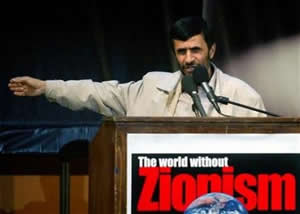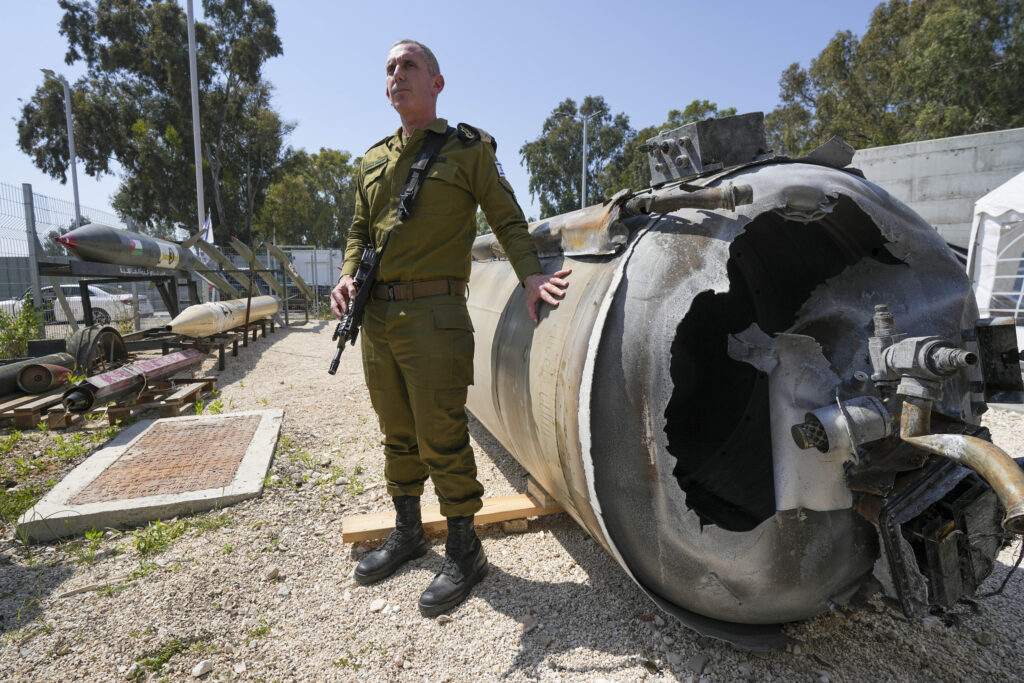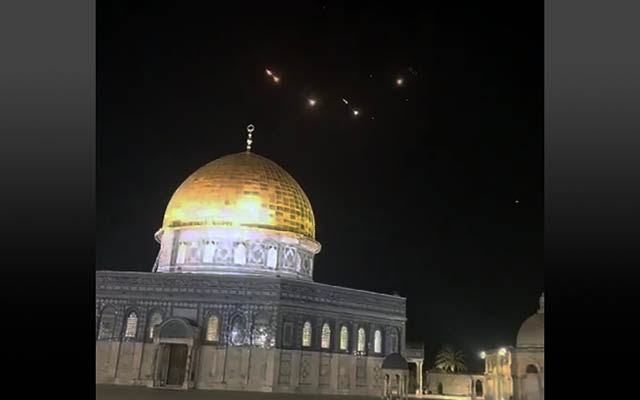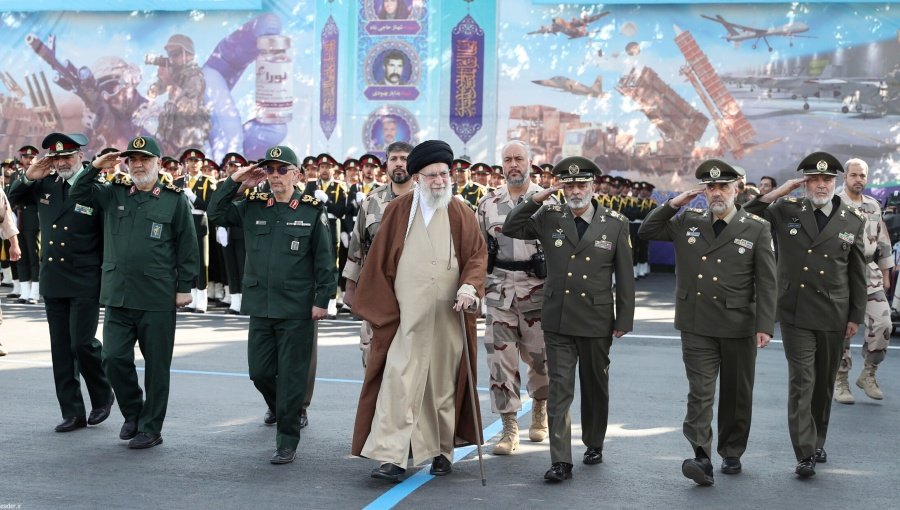UPDATES
The SMH’s quest to downplay the Iranian nuclear program
Mar 2, 2012 | Allon Lee

Seldom has there been such a brazen attempt to pass off pantomime as intelligent debate.
Saturday’s edition of the Sydney Morning Herald‘s (SMH) weekly “The Question” section – which canvasses the opinions of four experts with presumed standing on a specific issue – addressed the topic of “Is the West destined for war with Iran? Deepening distrust is fuelling a new round of sabre-rattling.”
A fair enough subject for discussion, however, the selected experts and range of views left a lot to be desired.
First, we had ‘The Pacifist’ – Jake Lynch, the Director of the Centre for Peace and Conflict Studies at the University of Sydney.
Lynch is the poster boy for the most inane of conspiracy theories, especially those that further his passion for traducing the United States and Israel.
His record speaks for itself. For example, in February 2011, Lynch wrote an op-ed asking if a pro-Zionist cabal brought down Kevin Rudd as Australia’s prime minister because “Under Rudd, Australia was making a series of steps away from its reflex pro-Israel position under John Howard – and away from the Washington line?” In Lynch’s own words:
So, was there an elaborate plot, involving the active connivance of pro-Israel groups, the US embassy, the mining industry and the Right faction of the ALP, and kept successfully secret, to bring Rudd down and install Gillard in his place?
In October 2011, the Australian‘s Imre Saluzinsky reported that Lynch wrote to Sydney University’s deputy vice-chancellor advising the cancellation of a forum involving visiting top Israeli scientists because it might offend Muslims:
In his letter to the university’s deputy vice-chancellor, Professor John Hearn, he says the forum is contrary to the university’s social inclusion policy, which requires it to reach out to students in western Sydney.
He says most Muslim students live in the west and feel “a sense of resentment and alienation resulting from the predominance of pro-Israeli voices in Australia’s political and media discourses”.
Surely anyone seriously offering such arrant nonsense that we must discriminate against Israelis because failing to do so discriminates against Muslims immediately disqualifies himself or herself from being approached as an expert? But either the SMH didn’t know or could care less and was content to grant legitimacy to Lynch.
In the SMH, Lynch was ever so slightly more restrained, suggesting that oil is the prize.
The strategic prize is control over access to a vital world asset.
The evidence of Iran’s pursuit of nuclear weapons is being manipulated to fit the objective, Lynch claimed, in a rerun of the lead up to the 2003 Iraq war.
The complex of commercial, military and political interests are on the lookout for a pretext. The record shows that one will be invented if it cannot be found.
For Lynch, Iran is not pursuing nuclear weapons, and even if it were it is immaterial because the creation of a bogeyman is the point behind the kerfuffle:
There is no new evidence that Iran is building nuclear weapons, and even if it did, they would be functionally useless. Recall: ”the intelligence and the facts are being fixed around the policy” – the words of a leaked memo from the British secret service about Iraq’s alleged weapons of mass destruction – and filter any claims of a ”threat” from ”the Islamic state” through our collective experience as victims of deceit and duplicity.
The second expert presented by the SMH was ‘The Activist’ – Helen Caldicott – who has a long record of activism against nuclear power.
Like Lynch, Caldicott believes that Western fears over Iran’s nuclear program are a confected beat up:
Just as the US manufactured “weapons of mass destruction” in Iraq, so certain political factions in the US and Israel are intent on creating international panic by claiming Iran is on the verge of becoming a nuclear power.
She gives Iran the benefit of the doubt over its nuclear intentions.
…the two most recent US National Intelligence Estimates – representing the judgment of the best senior officers from the main intelligence agencies – state there is no conclusive evidence that Iran has made any effort to build the bomb since 2003.
Indeed, she paints Iran as a victim of Western aggression – “recent nefarious interpretations of Iran’s activities leaves open the possibility of a US attack, while nuclear-armed Israel has fostered plans to attack Iranian nuclear facilities for years”.
Caldicott also quoted former International Atomic Energy Agency chief Mohammed ElBaradei that he had not seen a “shred of evidence that Iran has been weaponising”.
One should recall that in September 2009, then French Foreign Minister Bernard Kouchner accused ElBaradei of burying proof that would indicate an Iranian weaponisation program. As the UK Times reported:
Bernard Kouchner, the French Foreign Minister, said that France had attended a technical briefing that covered the material, so was surprised to find it missing from the report.
“In the annexes there are specifically elements which enable us to ask about the reality of an atomic bomb,” he said “There are issues of warheads, of transport.”
The closest Caldicott comes to expressing any concern over Iran’s nuclear program is to attack the Nuclear Non-Proliferation Treaty as flawed because:
…Under article IV, Iran is legally entitled to enrich uranium and to reprocess nuclear waste to obtain plutonium – both materials that can be utilised as fuel for nuclear weapons.
This stands in marked contrast to her decades of campaigning against the nuclear industry in the West.
Caldicott’s biggest fear is that nuclear weapons will be used to attack Iran’s hidden installations that are impervious to conventional bunker buster bombs.
What scenarios have been contemplated by the US and/or Israel?
….Conventional ”bunker busters” are not powerful enough to penetrate deeply and with enough power to effectively incapacitate Iran’s underground nuclear facilities but nuclear bunker busters would be, and the US Nuclear Posture Review legitimises such use of tactical nuclear weapons.
She goes on to predict that “2.6 million people would die” if nuclear weapons were used.
But as American Enterprise Institute analyst Michael Rubin noted in the Age on Jan. 5 when he responded to an article by ANU Professor Amin Saikal which included similar arguments to Caldicott:
Nor are military strikes as difficult as some believe. While Saikal argues that ‘most Iranian nuclear installations are buried deep underground’, itself an admission that they have no civilian purpose, [but] pilots point out that they need only destroy entrances to such facilities rather than blast the underground centrifuges, reactors and potential assembly plants and storage depots.
For the record, Israel has always maintained that it will not be the first country to use nuclear weapons in the Middle East, hardly the statements of a nuclear belligerent, and certainly not for use in the context of taking out Iranian nuclear installations. As Israeli Defence Minister Ehud Barak has repeatedly warned Iran will soon enter the “zone of immunity” which implies that a pre-emptive nuclear weapons attack on Iran’s nuclear installations is a non-starter. No serious analyst has suggested a nuclear attack on Iran’s installations is a plausible scenario.
Furthermore, unlike Iran, Israel has never threatened the destruction of another state.
Then there is ‘The Academic’ in the form of the aforementioned Saikal, who has a long record of sympathy for the regime in Iran, and has steadfastly argued that there is no evidence the regime is pursuing nuclear weapons.
As recently as Jan 3, Saikal wrote in the Age that, “there is so far no concrete evidence to prove that Iran has a military nuclear program.”
No, but enriching all available uranium to levels of 20% when that concentration is beyond what is needed for civilian power is pretty good proof, as is the work done on nuclear weapons components and other nuclear experiments with no civilian uses, as documented in the November 2011 International Atomic Energy Agency report.
And here too in the SMH Saikal claimed that, “it has not been conclusively established that Iran is pursuing a secret nuclear military program. The International Atomic Energy Agency, whose inspectors are now in Iran, have only alluded to the possibility of such a program.”
Saikal is content to maintain that sanctions and threats will not deter “Tehran from pursuing its nuclear program as a symbol of national pride and defiance to the West”.
This of course ignores all the Wikileaks evidence that Iran’s Arab neighbours are desperate to have Iran stopped and, in the case of Saudi Arabia, have made it known they will buy Pakistani nuclear weapons if Iran achieves weapons capability.
The last expert included was ‘The Analyst’ – Lowy Institute for International Policy non-resident fellow Rodger Shanahan, the only sober voice among the group of “experts”.
To his credit, Shanahan was also the sole expert to stick to the question rather than stick his neck out and categorically deny Iran has a nuclear weapons program.
All up, considering the titles used to describe these experts – analyst, academic, pacifist and activist – the SMH is clearly having a lend of its readers.
Essentially, we were potentially bombarded with the same views twice, most clearly in the responses provided by Lynch and Caldicott.
And according to the Lowy Institute website, Shanahan has “MAs in International Relations and Middle East Studies from the ANU and a PhD in Arab and Islamic Studies from the University of Sydney”.
The ANU Centre for Arab and Islamic Studies is of course run by Amin Saikal. [Interestingly, according to the ANU Faculty of Arts Annual Report 2000, the centre received US$350,000 in funding from the Iranian government to endow a lectureship in Persian language and Iranian studies]. So really, “academic” and “analyst” are descriptors cut from the same cloth.
This all seems to indicate that the SMH‘s editorial line is bleeding out.
Between January 13 and February 20, no less than four SMH editorials addressed the Iranian nuclear issue [ see here, here, here and here], all largely making the same point. In addition during that period there were a number of pieces on the opinion page that pretty much reflected this line of argument.
Generally, the editorials portrayed concerns about the Iranian nuclear program as chiefly a conflict between Iran and Israel – a clash that risks sliding into a war which the West should not encourage because both countries are bellicose and recklessly provoking the other.
More evidence of the SMH‘s desire to skew the debate in line with its own editorial preference appeared on Monday February 27 with the paper’s handling of an article by Fairfax Middle East correspondent Ruth Pollard.
The piece reported that analysis of US intelligence confirms Iran is not seeking a nuclear weapon.
Pollard’s story would appear to have been prompted by a New York Times story published on February 24.
The NY Times article offered depth and nuance by including background and a multiplicity of interpretations of the reassertion that Iran abandoned nuclear weaponisation in 2003.
It was clear in that article unlike Pollard’s that the intelligence was not saying the program was civilian but that they were pursuing nuclear weapons capability without having made the final decision to build bombs, at least for the moment.
Sadly, Pollard’s effort was part news story but mostly an echo chamber that cherry picked views to fit the SMH mantra that Israel is overreacting and Iran is not pursuing nuclear weapons.
Even more leaden-footed than Pollard’s article was the SMH headline which trumpeted, “Calls for calm as Iran nuclear risk discounted”. The SMH tacked on a preamble declaring that, “As Tehran heads for elections, intelligence backs its denials that it is preparing a nuclear bomb”.
By contrast, the Age published the piece too but headlined the item with the less bombastic “Sanctions buy diplomatic time in Iran standoff” and a terser preamble that “Tehran’s leaders ‘are not suicidal'”.
What to make of all this?
In a February 27 Wall Street Journal article, American Enterprise Institute analysts Frederick Kagan and Maseh Zarif dispersed the miasma to expose as naked and deluded the arguments papers like the SMH have been running in their editorials:
Americans are being played for fools by Iran-and fooling themselves. There is no case to be made that Iran is not pursuing a nuclear weapons capability. There is no evidence that Iran’s decision-makers are willing to stop the nuclear program in exchange for lifting sanctions or anything else.
…People are conflating intelligence assessment with policy recommendation. The prospect of war with Iran is so distasteful that people are desperate to persuade themselves that the problem is not serious.
…The Iranians have denied inspectors access to the facilities that inspectors suspect are being used to work on weaponization.
There is no evidence for any flexibility by the regime in Teheran, the pair assert, rather “Western observers are confusing internal Iranian disagreements about how to manage their economic challenges with disagreements about foreign policy”.
Implicit in the Kagan/Zarif analysis is a call for, if not a consensus position – “This is not a recommendation for a military strike on the Iranian nuclear program” – but certainly that “the debate must take place on the basis of a reality not skewed to support one or another policy option”. As they conclude,
Those who oppose military action against Iran under any circumstances must say so, and must accept the consequences of that statement. Those who advocate military action must also accept and consider the consequences-regional and possibly global conflict and all of the associated perils of war. But neither American nor Israeli nor any Western interest is served by lying to ourselves and pretending the predicament will go away.”
The question is, will the SMH editorial team stop its quest for long enough to at least acknowledge the facts, rather than skew coverage about Iran’s nuclear program to effectively bury them?
Allon Lee
Tags: Anti-Zionism











